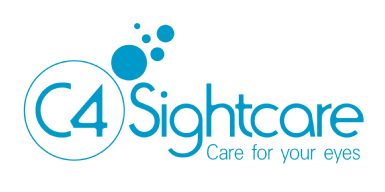



Myopia Management Revised Feb 2022
Myopia Background
Myopia is a common condition affecting 1 in 3 in the UK.
Blur occurs when the eyes focal point does not lie on the retina. A combination of the shape of the front of the eye and the lens focuses the light that enters the eye. If the retina lies at this focal point then vision will be sharp. If the eye is too short it is longsighted (hypermetropic). If the eye is too long it is short-sighted (myopic).
As the eye grows, an increase in its length causes an increase in myopia. Myopia often starts in childhood (between the ages of 8-13), continues to increase into early adulthood, and usually stabilises by late twenties. The earlier it starts, the faster it changes and the longer it continues will dictate how much myopia you end up with.
Small amounts of myopia may be inconvenient but sharp focus can be restored with either contact lenses or spectacles. However large amounts of myopia increase the chance of potentially serious eye problems such as retinal detachment, myopic degeneration and glaucoma. Each myopic increase of 1.00 dioptre increases the associated risk by up to 40%.
Myopia causes
There are genetic factors (parents who are myopic are more likely to have myopic children), but myopia appears to be increasing suggesting there are also environmental factors. The environmental factors are not fully understood; but the presence of blur and time spent indoors seem to be involved. By attempting to control these external factors we can attempt to slow down the changes in eye length and reduce the risk of the associated myopic problems.
It is believed that retinal blur can cause eye growth. Standard spectacles and contact lenses reduce blur for the central retina where we get the best vision- we do not notice peripheral blur because our sense of vision is so biased towards the centre. The current theory of myopic development is that peripheral blur continues to cause the eye to grow even though the central vision is sharp.
Myopia Management
In the UK, we currently have a choice of spectacles or contact lenses for myopia management.
At C4 Sightcare we offer:
• MiSight Contact lenses - these are soft, daily disposable contact lenses which have concentric zones which help deal with the peripheral blur.
• MiyoSmart Spectacles - these are spectacle lenses which have tiny bumps which help reduce the peripheral blur.
Currently Myopia Management treatment is not available through the NHS. Both options are £42.50/month by direct debit. These treatments cannot guarantee results; but both have clinical evidence claiming they can reduce eye growth by 40-60%.
This means in practice that some children respond very well with only small myopic changes; some children continue to change but at a reduced rate; and there are some children who seem to gain very little benefit. At present there is no way to predict the effectivity for an individual.
Research is continuing in this relatively new field of research. Drug therapies and other spectacle lens designs offer some hope. Low doses of the ocular drug Atropine shows promising results – however this is not currently available in the UK. There are various bifocal/multifocal spectacle lenses which may help certain children - we will continue to monitor this area with keen interest.
Myopia management could be a long-term commitment. There may be rebound effects, where the myopia increases rapidly if treatment is stopped – research is ongoing presently with current studies indicating no rebound effect with discontinuation of MiSight contact lens wear.
What else can we do?
• Try and encourage your child to hold books and digital devices more than 30cm from their eyes
• Encourage children to take a break from reading or using an electronic device every 30 minutes (even if only for a few minutes)
• Promote more outdoor activities (60-90 min outside per day)
• Use a full up-to-date prescription and have regular sight tests
